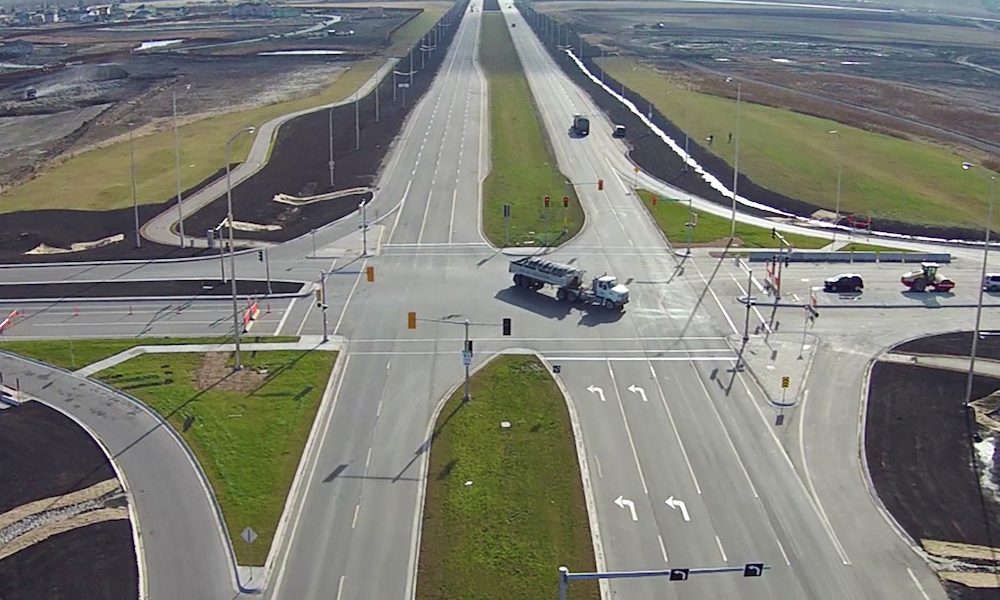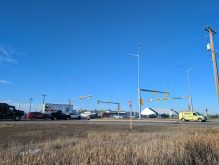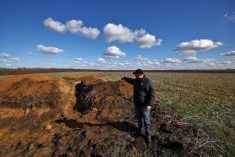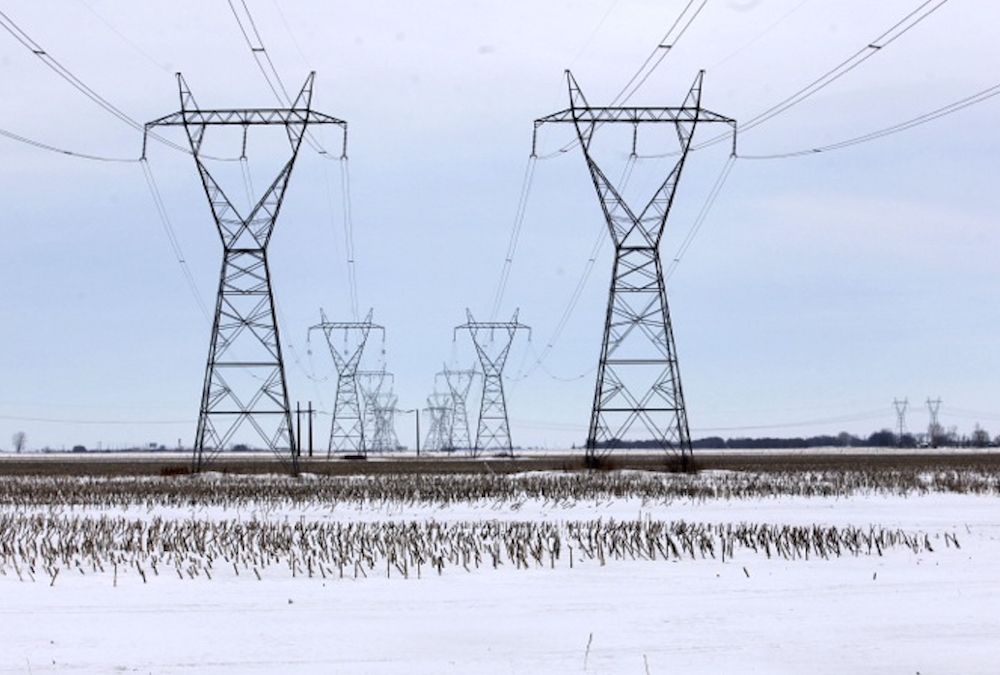Over the last 20 years, Manitoba has shaken off decades of slow growth and posted sustained and significant population expansion.
In 2000 there were 1.14 million citizens, according to figures from the most recent report on population by the provincial government. As of July of this year the same report estimated there were 1.41 million people calling the province home.
In round figures, that’s more than a quarter-million new residents in just two decades, and one of the most significant challenges has been housing them.
In response there’s been an explosion of developments, many of them encroaching on agricultural land, especially on the outskirts of Winnipeg, or in bedroom communities within driving distance of the capital.
For example, the Waverley West development is in the process of gobbling up about 3,000 acres of agricultural land on the southwestern outskirt of Winnipeg. The end result will be a community roughly the same size and density as Brandon.

Bill Campbell, president of the Keystone Agricultural Producers, says for the industry, lost farmland is an irreversible loss.
In particular, he said, bedroom community areas around larger population centres are of note, and he urged the need for robust consultation in cases where ag land is being broken up into residential plots.
“Be aware that once this land is taken from agricultural use, chances are it won’t come back to ag production,” he said.
Why it matters: As Manitoba’s population has grown, so has the need for housing and the pressure to convert farmland to neighbourhoods.
Further afield, smaller population centres have also chalked up impressive growth too.
Just south of Winnipeg the RM of Ritchot saw population growth between the 2011 and 2016 censuses over 21.9 per cent, compared to the provincial average of 2.3 per cent during the same period.
It was a similar tale in the Pembina Valley, where the population of Winkler jumped by 16.6 per cent, Morden by 8.6 per cent, and the surrounding RM of Stanley by 8.2 per cent.
That growth has not stopped in the years since those last census results.

In particular, Mayor Chris Ewen of the RM of Ritchot noted, the area has seen population swell in communities such as St. Adolphe and Ste. Agathe, as well as condo developments in Ile des Chênes in the last decade. Designated development zones in Grande Pointe, likewise, have seen large growth.
“Designated” is the key word in that phrase, according to the municipality. Ewen noted that the municipality shies away from what he calls “pocket” developments — such as a single lane with three or four houses breaking up the otherwise agricultural landscape.
“We’re seeing residential growth, but really focused in the areas that have always been designated for that residential growth,” he said.
Walking a tightrope
For community leaders, the challenge is in balancing the benefits of development and the effects on what’s already there.
Denys Volkov, executive director of the Association of Manitoba Municipalities said the same population growth feeding into urban sprawl is also feeding into the vibrancy and services of communities, which farmers also benefit from.
The same population growth feeding into urban sprawl is also feeding into the vibrancy and services of communities, which farmers also benefit from.

“Development brings people to the area, creates jobs, brings businesses, brings investment,” he said.
In an agriculture-focused community, that development also feeds back into the industry in the form of new machinery dealers, processors and other agribusiness.
Volkov also noted that rural council members, more often than not, are themselves tied to agriculture.
Wayne Caldwell, professor of rural planning and development of the University of Guelph, says those tensions are common ones across Canada for rural communities that are growing.
The result, according to Campbell, is a delicate balance where farmers, indeed, want to see their communities grow and flourish, while at the same time protecting good land from going out of production.
It is difficult to limit some of that development, he noted, but argued that “there needs to be a better long-term discussion on what the needs and what the services and what the benefits for all citizens are as we make the development plans.”
Agriculture has an “equitable” seat at the table compared to other priorities when municipalities go to put those development plans on paper, according to Margot Cathcart, CEO of the Rural Manitoba Economic Development Corporation.
There are approval processes in place to ensure plans are, in fact, made with an eye to the future, she noted.

“There are lots of process and regulation and procedures and assessment and guidelines and those sorts of things that are in place to make sure that… the balance is there,” she said.
She added while agriculture is a big part of the picture to keeping rural communities viable, not all land is necessarily best used for agriculture.
“Some of it may be too rocky or it may be just the wrong soil types and all of those other kinds of things,” she said.
Volkov also cited the process all municipalities must go through to both lay out their long-term development and get it OK’d by the provincial planning offices. Collaboration between local residents, councils, and department staff both locally and provincially is common, he noted.
KAP does have policy on urban development, Campbell also said, although that policy was developed upwards of three decades ago. The policy mainly focused on identifying land vulnerable to inappropriate development and preserving it, while also acknowledging municipal needs for growth.
“There’s a lot of factors that play into it, but just uncontrolled urban sprawl… I think it needs to be addressed and talked about,” he said.

“We do need processing facilities and services that sometimes require large areas of space, be it for whatever, a machinery dealership or whatever. We do realize that those services and areas are required.”
KAP has been called to consult on at least one case where a community was annexing a substantial portion of ag land, he also said.
Back at the RM of Ritchot, agricultural use has always taken centre stage when it comes to zoning priorities, and is an important pillar of the municipality’s development plan.
Among the policies on paper, the plan includes articles to protect prime and “viable lower-class” ag land from being used for anything except for agriculture. Another policy protects those same land classes from being broken up (such as an 80-acre guideline for those land parcels), planning district administrator Tanya Waddell said.
Read Also

Local farm businesses, groups look forward to Manitoba Ag Days 2026
Most of agriculture is seemingly at Manitoba Ag Days each January: Manitoba agribusinesses and farm groups look forward to connecting with farmers at the 2026 show.
The plan is currently under review through the Macdonald-Ritchot Planning District. Waddell says the region is about halfway through the review and expects to finalize it by midway through 2022, at the latest.
Agriculture was “quite important” in the previous plan, she noted, “and I don’t think that has changed.”
The RM hopes to have its new development plan finalized by March 2022.
Input necessary
Robust consultation is another piece of the puzzle, Cathcart noted, pointing to tools like zoning, bylaws and conditional permits.
“Communities are responsible for putting in responsible plans — opportunities for constituents within the communities to participate and to have a voice and that everybody needs to participate in that process,” she said.
“I don’t think it’s a one size fits all based on any one community or region because they’re all unique. I think one of the risks that conversations around this have is trying to make it a one-size-fits-all solution, and I don’t think that, that’s the case.”
Ewen also noted the incoming ‘Plan20-50,’ a long-term regional growth and service plan developed by the 18 municipalities of the Winnipeg Metropolitan Region.
That plan, according to Ewen, is part of his area’s efforts to take ag land protection a step further, “ensuring that we have designated zones that are for development only and never taking away from that agricultural prime land.”
Among other things, the plan features a list of proposals meant to protect agriculture, including:
- A caveat on parcel size similar to the RM of Ritchot;
- Agriculturally focused assessments to gauge and limit the agricultural impact of development; and
- The creation of a regional agricultural master plan to monitor ag land status, bolster industry opportunities and infrastructure investment and collaborate with partners such as Indigenous communities to support agriculture on Indigenous-owned lands.
A draft of the plan was submitted to the province in June 2021.
Sign of change
These sorts of discussions are, according to Bill Ashton, director of Brandon University’s Rural Development Institute, a positive mark in how attitudes in the planning sector have changed.
Like others, Ashton emphasizes the roll of planning. Healthy residential development in the country must be in the right place, he said, while a town or city’s innovation when it comes to infrastructure like sewer and water service will also determine how successful they are in walking the line between growth and agriculture land loss.
Rural community planners are often the ones juggling those balls and, in most cases, they’ll have the dual responsibility of paving the way for vibrant communities, as well as the surrounding rural landscape of an area.
Ashton worries, however, that traditional training for planners may skew that balancing act toward the urban.
“Planning has grown up as a kind of a culture of talking about preserving agricultural land… but not necessarily being able to affect it with useful tools,” he said. “So, they use zoning, but zoning doesn’t always help protect or prevent good-quality agricultural land from being used for urban development.”
Part of the problem, he argued, is how planners are traditionally trained to think about land.
Where a farmer will see a field and understand the production value of that parcel, a planner may have a difficult time seeing that field as more than just empty space.
“From a municipal perspective, it’s either developed land for residential, commercial, industrial, or it’s undeveloped, basically just waiting to be developed, and there’s no appreciation for the quality of the soil,” he said.
“At the beginning of my career I knew nothing of what it takes to make a farming enterprise, a cattle enterprise work, and the interface and the protections that farmers are interested in, in terms of run-off, etc.,” he recalled.
Many planning schools have an urban focus, he noted. Instead, Ashton advocates for a “more regional and rural” approach to training planners, something he said would better incorporate rural issues into course material and give future planners a better foundation in the ag industry. Things are, however, changing.
Like Ewen, Ashton pointed to the Winnipeg Metropolitan Region’s work to pursue development in a way that branches urban and rural populations.
That attitude, he said, is becoming more integrative, and there is a growing understanding that urban and rural neighbours do not exist in exclusion to each other, and so neither should their planning.
Cathcart also pointed to recent changes in the planning process. She admits there’s been a learning curve, but also insists there’s a real desire to improve.
“Everybody’s committed to doing what’s in the best interest of the constituents within their communities, recognizing that the agricultural community, be it producers or processors or ag suppliers, are all part and parcel of that ecosystem,” she said.
NEXT WEEK: New rural residents can put pressure on existing operations.
















